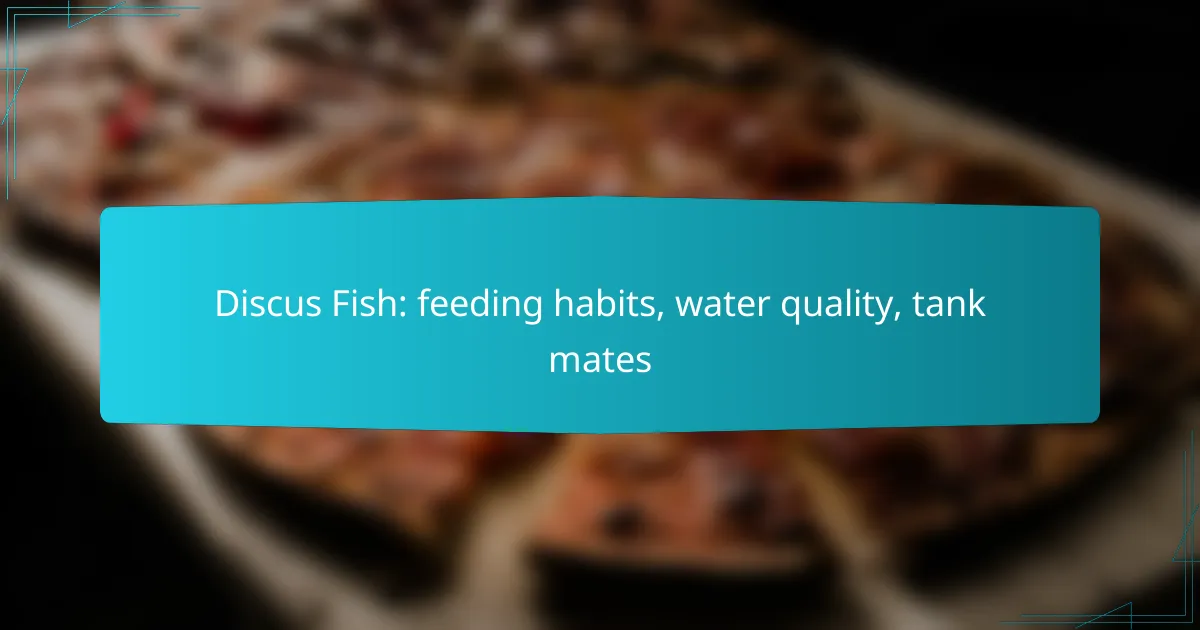Mollies are versatile fish that thrive in water salinity levels between 1.005 and 1.025 specific gravity, making them suitable for both freshwater and brackish environments. They are generally peaceful and can coexist with other compatible species in community tanks, while avoiding aggressive tank mates. To keep Mollies healthy and vibrant, it’s essential to provide a balanced diet tailored to their size and activity level.

What is the ideal water salinity for Mollies?
The ideal water salinity for Mollies typically ranges from 1.005 to 1.025 specific gravity. Maintaining this salinity level is crucial for their health and overall well-being, as Mollies are adaptable fish that thrive in both freshwater and brackish environments.
Recommended salinity range
Mollies are versatile fish that can tolerate a variety of salinity levels, but a specific gravity of 1.005 to 1.015 is generally recommended for optimal health. For brackish setups, a salinity closer to 1.020 to 1.025 is acceptable. It’s important to gradually acclimate them to any changes in salinity to avoid stress.
Effects of salinity on health
Salinity levels significantly impact the health of Mollies. Low salinity can lead to osmotic stress, resulting in issues like swelling and lethargy. Conversely, excessively high salinity can cause dehydration and reduce their immune response, making them more susceptible to diseases.
Adjusting salinity levels
To adjust salinity levels, start by using a hydrometer to measure the current specific gravity. If you need to increase salinity, add marine salt gradually, ensuring to dissolve it fully before introducing it to the tank. Decreasing salinity should be done slowly by adding freshwater to the tank over several days to prevent shock.

What tank mates are compatible with Mollies?
Mollies are generally peaceful fish that can thrive in community tanks with the right tank mates. Ideal companions include other peaceful species that share similar water conditions and temperaments, while aggressive or overly territorial fish should be avoided.
Best tank mates for Mollies
Some of the best tank mates for Mollies include guppies, platys, and swordtails. These species not only share similar water requirements but also have compatible temperaments, making them suitable for a harmonious community tank.
Additionally, tetras such as neon tetras and rasboras can coexist well with Mollies. They are small, peaceful fish that add color and activity to the tank without posing a threat to Mollies.
Fish to avoid with Mollies
When selecting tank mates for Mollies, avoid aggressive fish like cichlids and bettas, as they can harass or injure Mollies. Fish that are known for territorial behavior, such as certain barbs, should also be kept out of the tank.
Moreover, avoid keeping Mollies with very small fish like guppy fry or shrimp, as they might be seen as food. Ensuring all tank mates are of similar size and temperament is key to a peaceful aquarium environment.
Community tank considerations
When setting up a community tank with Mollies, consider the water parameters such as temperature, pH, and salinity. Mollies thrive in slightly brackish water, so ensure that other species can tolerate these conditions.
It’s also essential to provide ample space and hiding spots to reduce stress among fish. A well-planted tank with open swimming areas will help maintain a balanced ecosystem and promote healthy interactions among all species.

How to feed Mollies effectively?
Feeding Mollies effectively involves providing a balanced diet that meets their nutritional needs while considering their size and activity level. A varied diet helps maintain their health and enhances their vibrant colors.
Recommended diet for Mollies
Mollies thrive on a diet that includes high-quality flake food, pellets, and live or frozen foods. They are omnivores, so incorporating plant matter like spirulina and blanched vegetables, along with protein sources such as brine shrimp or bloodworms, is beneficial.
Offering a mix of these food types ensures they receive essential vitamins and minerals. Aim for foods specifically designed for freshwater fish to meet their dietary requirements.
Feeding frequency and portion sizes
Feed Mollies two to three times a day, providing only as much food as they can consume in a few minutes. This approach prevents overfeeding and maintains water quality in the tank.
Adjust portion sizes based on the number of fish and their size; smaller Mollies may require less food than larger ones. Monitor their behavior and adjust feeding amounts accordingly to avoid waste.
Common feeding mistakes
One common mistake is overfeeding, which can lead to poor water quality and health issues. Always observe how much food your Mollies consume and remove any uneaten food promptly.
Another mistake is neglecting variety in their diet. Sticking to only one type of food can lead to nutritional deficiencies. Ensure you rotate food types to keep your Mollies healthy and active.

What are the prerequisites for keeping Mollies?
To successfully keep Mollies, you need to ensure appropriate tank size, water quality, and compatible tank mates. These factors are crucial for their health and well-being in a home aquarium setting.
Tank size requirements
Mollies thrive best in a spacious environment, with a minimum tank size of around 20 gallons for a small group. This size allows for adequate swimming space and helps maintain stable water parameters.
For larger groups or mixed species tanks, consider increasing the tank size to 30 gallons or more. Overcrowding can lead to stress and health issues, so always plan for the adult size of your fish.
Water quality parameters
Mollies prefer slightly brackish water, with salinity levels around 1.005 to 1.015 specific gravity. Regular testing for salinity, pH, and ammonia levels is essential to maintain a healthy environment.
Ideal pH levels should range between 7.5 and 8.5, while water temperature should be kept between 24°C and 28°C (75°F to 82°F). Regular water changes of 10-20% weekly can help keep these parameters stable and promote a healthy tank ecosystem.

What are the signs of stress in Mollies?
Signs of stress in Mollies can manifest through changes in behavior and physical appearance. Recognizing these signs early can help prevent serious health issues and improve their overall well-being.
Behavioral indicators
Stressed Mollies may exhibit unusual behaviors such as hiding, excessive swimming, or lethargy. They might also show signs of aggression towards tank mates or become more reclusive than usual.
Another common behavioral sign is rapid gill movement, which can indicate difficulty breathing due to poor water quality or high salinity levels. Monitoring their activity levels and interactions with other fish can provide insight into their stress levels.
Physical symptoms
Physical signs of stress in Mollies include faded colors, clamped fins, and lesions or spots on their bodies. These symptoms often indicate underlying health issues or poor environmental conditions.
Additionally, if you notice abnormal swimming patterns or buoyancy problems, it may signal stress related to water quality or salinity. Regular water testing and maintaining stable conditions are crucial for preventing these physical symptoms.

What are the emerging trends in Molly care?
Emerging trends in Molly care focus on optimizing water conditions, selecting compatible tank mates, and understanding their specific feeding requirements. As aquarists become more knowledgeable, they are increasingly adopting practices that enhance the health and well-being of Mollies.
Water Salinity
Mollies are unique among freshwater fish as they can thrive in both freshwater and brackish water conditions. Maintaining a salinity level of around 1-3 grams per liter can promote optimal health and coloration. Regular testing of salinity levels is essential to ensure that they remain within this range.
When introducing Mollies to a new tank, it’s crucial to acclimate them slowly to avoid stress. Gradually increasing the salinity can help them adjust better, especially if they are transitioning from freshwater to brackish environments.
Tank Mates
Choosing the right tank mates for Mollies is vital for a harmonious aquarium. Ideal companions include peaceful species like Guppies, Platies, and Tetras. Avoid aggressive fish that may stress or harm Mollies, as they can be more vulnerable due to their generally docile nature.
Consider the size and temperament of potential tank mates. A good rule of thumb is to ensure that all fish are of similar size to prevent bullying. Additionally, providing ample hiding spots can help reduce stress and territorial disputes among fish.
Feeding Requirements
Mollies are omnivores and thrive on a varied diet that includes high-quality flakes, pellets, and occasional live or frozen foods. A balanced diet should consist of plant-based materials, such as spirulina, along with protein sources to support their growth and health.
Feed Mollies small amounts two to three times a day, ensuring that they consume everything within a few minutes to prevent water quality issues. Overfeeding can lead to health problems, so monitoring their intake is crucial for maintaining a healthy aquarium environment.










